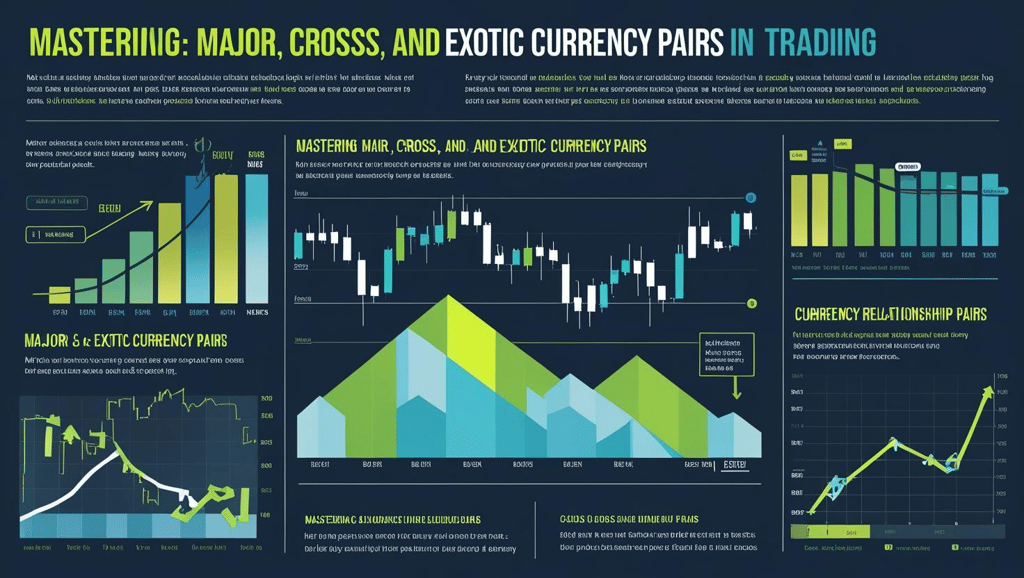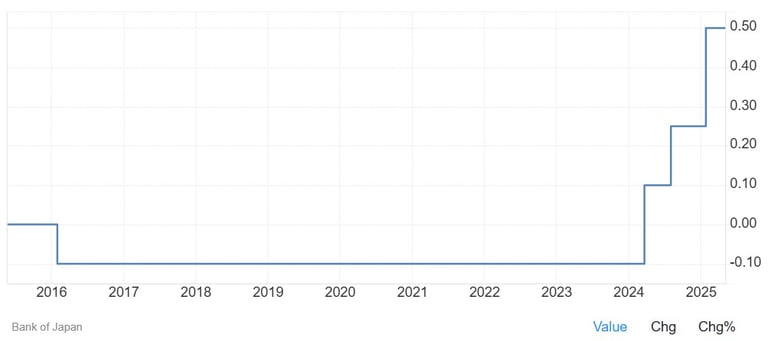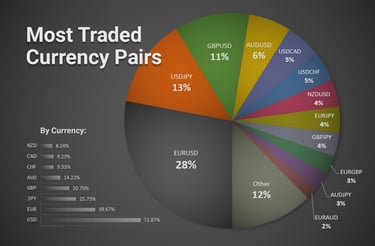Master Major, Cross, and Exotic Pairs in Forex Trading
Explore the differences between major, cross, and exotic currency pairs in Forex trading. Learn how each behaves, what drives their movements, and how to choose the right pairs for your trading goals. Learn how to trade them effectively with expert guidance from TradePulse Academy.
TradePulse Academy
6/16/20254 min read


Introduction
Forex trading is more than buying and selling currencies — it’s about identifying the right pairs, understanding their behavior, and recognizing the forces behind their movement. In this guide, we dive into major, cross, and exotic currency pairs, their unique characteristics, and how they can help you diversify your trades.
Major Currency Pairs – The Heavyweights of Forex
In the global Forex market, a few key currency pairs dominate trading volumes due to their high liquidity, tight spreads, and economic importance. These include: EUR/USD, USD/JPY, GBP/USD, AUD/USD, USD/CAD, NZD/USD, and USD/CHF. Let’s break down what makes each of them unique:
EUR/USD – “Fibre”
The most traded currency pair globally, EUR/USD makes up nearly 28% of all Forex transactions. Its movements are driven by economic indicators, monetary policy, and political developments in both the U.S. and the Eurozone.
As highlighted by Kočenda & Moravcová (2018), its high trading volume also ensures efficient pricing and eliminates arbitrage opportunities across Euro and Dollar pairs.
USD/JPY – “Ninja”
The USD/JPY pair continues to exhibit a larger pip value, largely due to the historically low valuation of the Japanese yen—a direct consequence of the Bank of Japan’s extended period of ultra-low interest rates. Over the past decade, Japan has transitioned from negative or near-zero policy rates to a cautious normalization: the BoJ raised rates to 0.5% in January 2025, marking the first hike in 17 years after ending its negative-rate stimulus (source:
TradingEconomics).
USD/CHF – “Swissie”
The Swiss Franc is considered a safe-haven currency, often rising during global uncertainty.
Due to Switzerland’s close economic ties with the Eurozone, USD/CHF tends to show a negative correlation with EUR/USD and GBP/USD, making it a valuable hedge.
GBP/USD – “Cable”
This pair ranks as the third-most traded in the world, contributing about 11% of global turnover. GBP/USD is highly sensitive to interest rate changes in the UK and US, often reacting sharply to policy announcements. It correlates positively with EUR/USD and negatively with USD/CHF.
AUD/USD – “Aussie”
The Australian Dollar is heavily influenced by commodity prices, particularly iron ore, coal, and copper. Since China is a key trading partner, AUD/USD often reflects trends in Chinese demand and RBA monetary policy decisions.
USD/CAD – “Loonie”
Oil prices are a key driver of the Canadian Dollar, given that crude oil is Canada’s largest export. Any fluctuations in oil — especially due to OPEC decisions — can significantly impact USD/CAD valuations.
NZD/USD – “Kiwi”
The Kiwi is influenced by differences in interest rate policies between the Reserve Bank of New Zealand and the U.S. Federal Reserve. Rate divergence often causes strong moves in the NZD/USD exchange rate.
Image shows the most traded currency pairs in Forex in 2023.
Understanding how these major currency pairs respond to economic shifts and market sentiment is essential for every trader. Their unique characteristics help traders choose the right instruments for different strategies, timeframes, and risk appetites.
Cross Currency Pairs – Trade Without the Dollar
These pairs exclude the U.S. dollar and can be useful for arbitrage and diversification. Popular examples:
EUR/GBP
EUR/JPY
GBP/JPY
EUR/CHF
These pairs become particularly attractive when the U.S. dollar is trading sideways or experiencing significant volatility. Traders often use them for arbitrage opportunities or as a hedge against fluctuations in exchange rates, especially during times of increased demand for foreign currencies and growth in global forex market activity.
Exotic Currency Pairs – High Risk, High Reward
Exotic pairs include currencies from developing or emerging markets:
USD/TRY (Turkish Lira)
USD/MXN (Mexican Peso)
EUR/ZAR (South African Rand)
These currencies are less frequently traded, resulting in wider spreads and higher transaction costs. Due to their lower liquidity, they tend to react more sharply to economic and geopolitical developments. Research has shown that scheduled U.S. macroeconomic releases and central bank announcements significantly impact both the returns and liquidity of emerging market currencies. Smart traders use exotics carefully — often with strong risk controls in place.
Why Currency Pair Choice Matters?
Different pairs behave differently. Selecting the right pair based on factors like:
Volatility tolerance
Trading timeframe
Relevant economic trends
…is essential for consistent profitability and long-term growth.
Each pair reacts differently to market news, interest rate decisions, and geopolitical events.
Understanding the historical behavior of a currency pair can help you set more precise stop-loss and take-profit levels.
Aligning your trading style with the specific characteristics of a pair improves strategy execution and strengthens risk management.
Mentorship Makes the Difference
Forex trading isn’t just about knowing — it’s about doing it right. Learning through mentorship helps you:
Avoid emotional mistakes
Build a personalized trading strategy
Understand currency correlations
Manage risk effectively
At TradePulse Academy, we bridge the gap between education and execution with mentor-led courses, simulations, assignments, competitions, and real-market case studies.
Learn to Trade Smart, Not Just Fast
Whether you're drawn to majors, want to try cross-pairs, or explore exotics — understanding the structure of the market gives you an undeniable edge.
🎓 Want to become a confident, well-informed trader?
Explore TradePulse Academy’s structured mentorship certified programs here.




© 2025 TradePulse Academy. All rights reserved.
Get in Touch
📧 Email: info@tradepulseacademy.com
📞 Phone: +91 92860 65788
TradePulse Academy
Empowering Futures to Trade, Invest, & Succeed Through Financial Education


